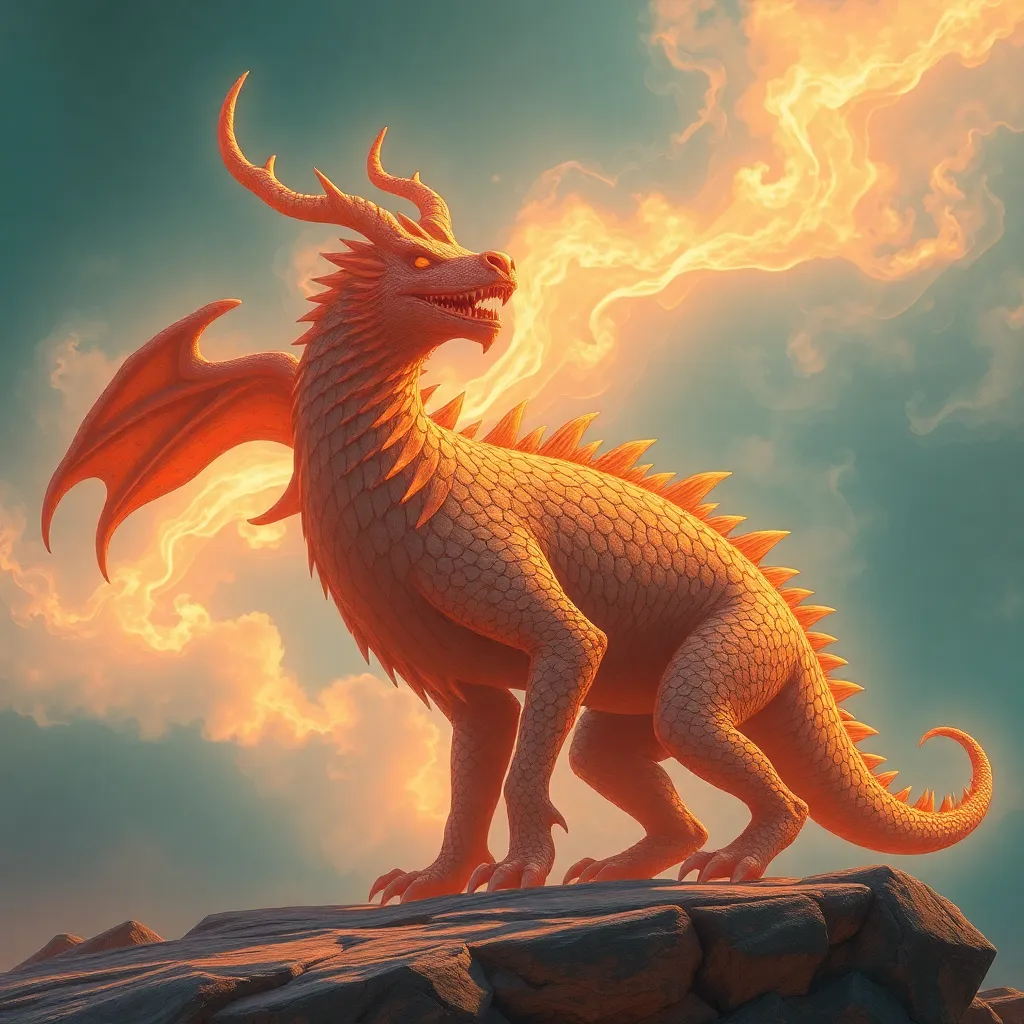The Wendigo’s Influence on Modern Music and Art: Exploring Contemporary Artistic Responses
I. Introduction
The Wendigo is a legendary creature rooted in the folklore of various Indigenous peoples of North America, particularly the Algonquian tribes. Traditionally depicted as a malevolent, cannibalistic spirit, the Wendigo embodies the dangers of greed, excess, and the loss of humanity.
The significance of the Wendigo myth extends beyond mere storytelling; it serves as a cultural touchstone within Indigenous communities, reflecting deep-seated fears and moral lessons. This article aims to explore how the Wendigo has influenced contemporary music and art, revealing its enduring power in modern artistic expression.
II. Historical Context of the Wendigo Legend
The origin of the Wendigo legend can be traced back to the oral traditions of Indigenous tribes, where it has evolved over centuries. Initially, the Wendigo was a symbol of the harsh realities of survival in the wilderness, particularly during harsh winters when food was scarce.
Culturally, the Wendigo holds a significant place in Indigenous narratives, representing the consequences of overindulgence and the loss of self. It serves as a cautionary tale about the dangers of letting one’s desires consume them. The Wendigo is not just a monster; it is a reflection of human fears and societal issues, making it a powerful symbol of fear and survival.
III. The Wendigo in Contemporary Music
In recent years, the Wendigo has made a notable impact on contemporary music across various genres. Artists have drawn inspiration from the myth, weaving its themes into their lyrics and overall artistry.
A. Analysis of musical artists inspired by the Wendigo
- Folk and traditional influences: Many folk musicians incorporate the Wendigo’s themes into their storytelling, using traditional melodies and instrumentation to evoke a sense of place and history.
- Modern genres: Genres like metal and hip-hop have also embraced the Wendigo, utilizing its dark imagery and narrative potential to convey deeper messages.
B. Examples of songs and albums that reference the Wendigo
Artists such as the band Wendigo and rapper Shabazz Palaces have created works that explicitly reference the Wendigo. For instance, Shabazz Palaces’ song Wendigo explores themes of consumption and identity in a modern urban context.
C. Themes of isolation, consumption, and existential dread
Many songs inspired by the Wendigo delve into themes of isolation and existential dread, mirroring the creature’s association with loneliness and the insatiable hunger for more. These themes resonate with listeners, reflecting contemporary societal struggles.
IV. The Wendigo in Visual Art
Contemporary visual artists have also found inspiration in the Wendigo myth, exploring its rich symbolism through various mediums.
A. Exploration of contemporary artists depicting the Wendigo
Artists like Kent Monkman and Shary Boyle have depicted the Wendigo in their works, reinterpreting the creature’s mythos in a modern context.
B. Various mediums: painting, sculpture, digital art
- Painting: Many painters portray the Wendigo as a haunting figure, often set against stark landscapes that evoke feelings of desolation.
- Sculpture: Sculptors have created three-dimensional representations, allowing audiences to engage with the myth physically.
- Digital art: The rise of digital art has enabled artists to explore the Wendigo in new, innovative ways, using technology to enhance storytelling.
C. Symbolic interpretations and visual storytelling
Through their work, artists convey the Wendigo’s symbolic meanings, often reflecting societal issues such as greed, environmental destruction, and the struggle for identity.
V. The Role of the Wendigo in Literature and Poetry
The Wendigo has also left an indelible mark on contemporary literature and poetry, influencing writers and poets across genres.
A. Influence on contemporary writers and poets
Many writers use the Wendigo as a metaphor for modern societal issues, exploring themes such as addiction, consumerism, and the alienation of urban life.
B. The Wendigo as a metaphor for modern societal issues
In works like The Only Good Indians by Stephen Graham Jones, the Wendigo serves as a haunting presence that reflects the complexities of Indigenous identity in contemporary society.
C. Notable works and their thematic connections to the Wendigo myth
Poets such as Gwendolyn MacEwen and Linda Hogan have also integrated Wendigo imagery into their poetry, using it to explore themes of loss, longing, and the human condition.
VI. The Intersection of the Wendigo and Environmental Themes
The Wendigo myth has recently intersected with environmental themes, with artists using its narrative to address ecological destruction.
A. The Wendigo as a representation of ecological destruction
The creature’s insatiable hunger can be interpreted as a metaphor for humanity’s relentless consumption of natural resources. This connection has prompted artists to reflect on the consequences of environmental neglect.
B. Artistic responses addressing climate change through the lens of the Wendigo
Artworks that incorporate the Wendigo myth often serve as critiques of modern consumer culture and its impact on the planet, urging audiences to reconsider their relationship with nature.
C. Case studies of specific works that blend myth and environmental activism
- The installation Wendigo by artist Kristin Oppenheim: This piece uses sound and light to create an immersive experience that evokes the Wendigo’s haunting presence and its connection to environmental themes.
- Documentary projects: Some artists have created documentaries that explore the intersection of the Wendigo myth and environmental issues, providing a platform for Indigenous voices in the dialogue on climate change.
VII. Public Reception and Cultural Appropriation Concerns
As the Wendigo appears in modern art and music, discussions around cultural appropriation and the reception of these interpretations have emerged.
A. Discussion of how modern interpretations are received by Indigenous communities
Indigenous communities often have mixed feelings about contemporary representations of the Wendigo. While some view it as a means of cultural exchange, others express concern about misrepresentation and commodification.
B. The balance between artistic expression and cultural sensitivity
Artists must navigate the delicate balance between drawing inspiration from the Wendigo myth and respecting its cultural origins. This requires a deep understanding of the myth’s significance within Indigenous cultures.
C. Examples of both positive and negative responses to Wendigo-inspired works
Some Indigenous artists have praised contemporary works that honor the Wendigo myth, while others criticize those that trivialize its meaning. Open dialogues are essential to fostering mutual respect and understanding.
VIII. Conclusion
The Wendigo’s influence on modern art and music highlights its enduring relevance as a symbol of human experience and societal challenges. As artists continue to explore this myth, it is crucial to respect its cultural origins and engage thoughtfully with its themes.
Ultimately, the Wendigo serves as a powerful lens through which contemporary issues can be examined, making it an invaluable source of inspiration for artists. As we move forward, the challenge remains to honor the Wendigo’s legacy while embracing its potential for artistic expression.



